Everything you need to know about snake plants and soil!
Whether you are a beginner or an experienced potted plant collector, you have probably encountered the snake plant. Also known as Dracaena trifasciata, these slow-growing plants are an excellent complement to a variety of interior living spaces and offer a variety of beneficial properties as well as carry positive symbolic significance. Although it is generally easy to maintain and tolerant of varying light conditions, it is important that you set it to succeed with the right soil mix. Join us as we help you choose the best soil mixture for your snake plant at home.
The best soil mixture for snake plants – the essentials
Snake plants do best in potted plant mixtures that retain moisture but also drain well. They are satisfied with a soil mixture with a slightly acidic or alkaline pH, in the range 5.5-7.5. A soil mixture containing 3 parts versatile potting soil containing sphagnum peat moss, with 1 part coarse sand or perlite, 1 part coconut coke and 1 part fine-grained pine bark is an excellent mixture for snake plants.
How the soil affects the health of plants

When bringing home new snake plants, it is important to understand the role that the soil plays in their health and growth.
The right soil for snake plants helps them get key elements they need to thrive, such as moisture, nutrients and oxygen. The soil also acts as the solid base that supports the roots of your plant. It gives them the space and structure they need to grow strong (this is especially important for newly propagated snake plants).
Each plant species has different requirements for moisture, nutrition, soil pH and oxygen intake. So it is crucial to choose a soil that can best meet these needs for optimal health and growth.
Signs that you are using the wrong soil mixture for snake plants
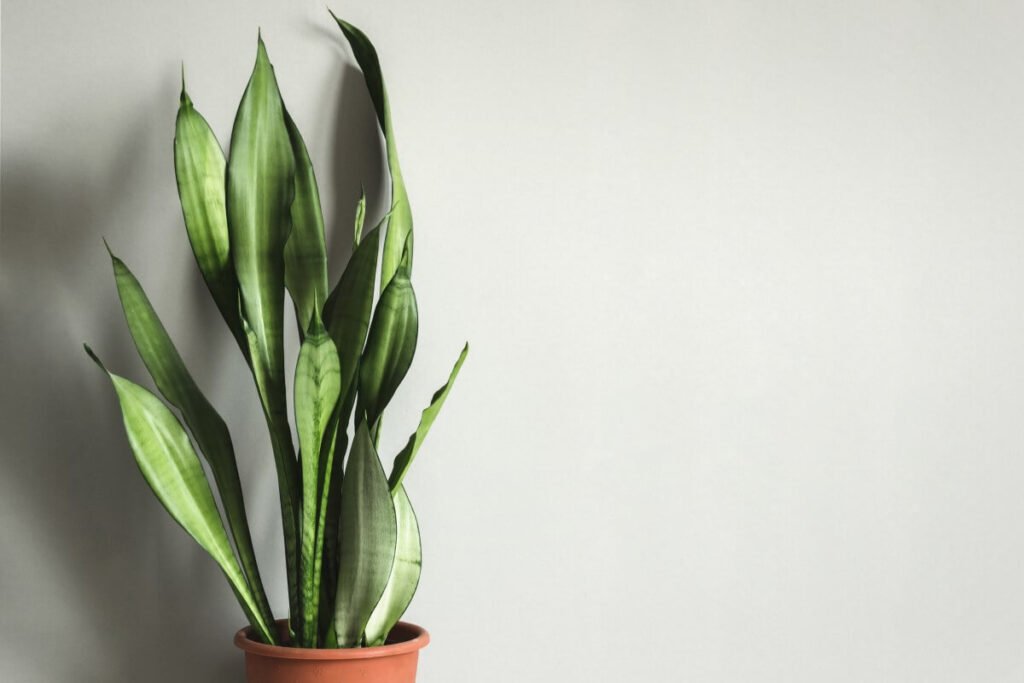
In general, most types of snake plants are forgiving when you make mistakes. However, if you use dense soil that holds too much moisture, you may notice some signs of poor plant health.
Here are some indicators to look for if you are using the wrong soil mix for your snake plant.
Remember that these symptoms can also be due to other environmental factors. Other problems can be overwatering or underwatering, too much or too little sunlight, lack of nutrients or temperature problems. Assess all conditions before deciding that the plant’s soil is the culprit.
The basics of well-draining potting soil for snake plants
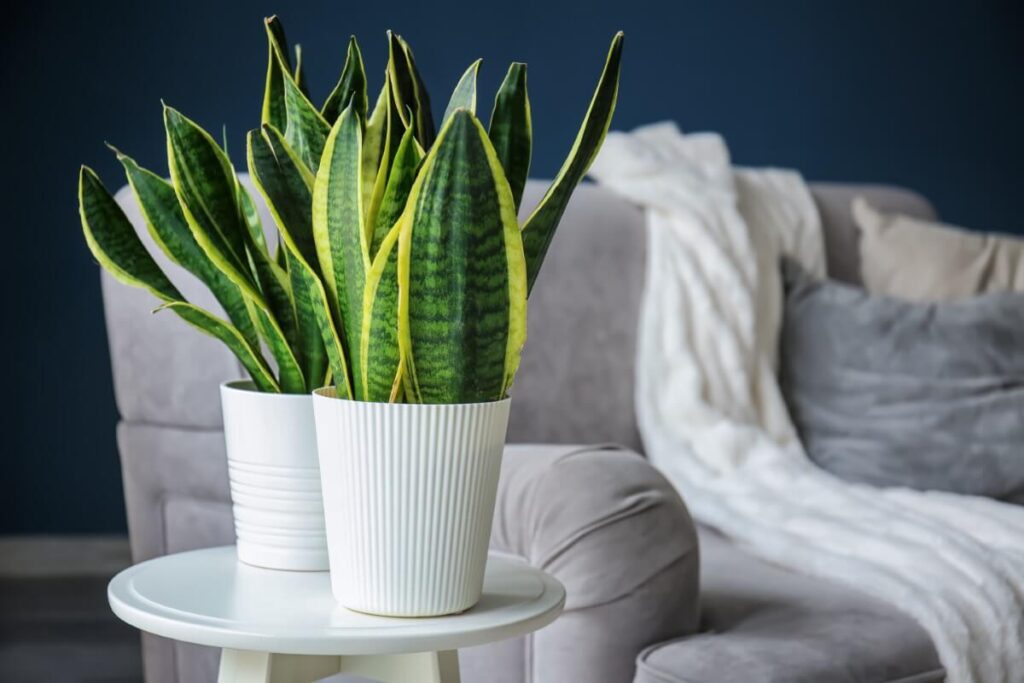
Snake plants need well-draining potting soil. This is because they run the risk of developing moisture-related problems such as root rot. The roots of this plant need space to breathe, and a wet environment makes it more difficult for them to aerate and perform important functions to help the plant thrive.
In addition, your snake plant moisturizes itself by storing water in its leaves and rhizomes. So they do not need to have access to constant moisture, because they have it available when they need it.
Cactus mixtures have a fantastic composition for optimal drainage. You can also use a regular pot mix with ingredients such as peat moss, sand or perlite.
What pH levels in the soil are best for snake plants?
Now snake plants do best in soil with a pH from 5.5 to 7.5. In other words, they are happy whether their soil is slightly acidic, neutral, slightly alkaline or somewhere in between.
Soil considerations based on container type
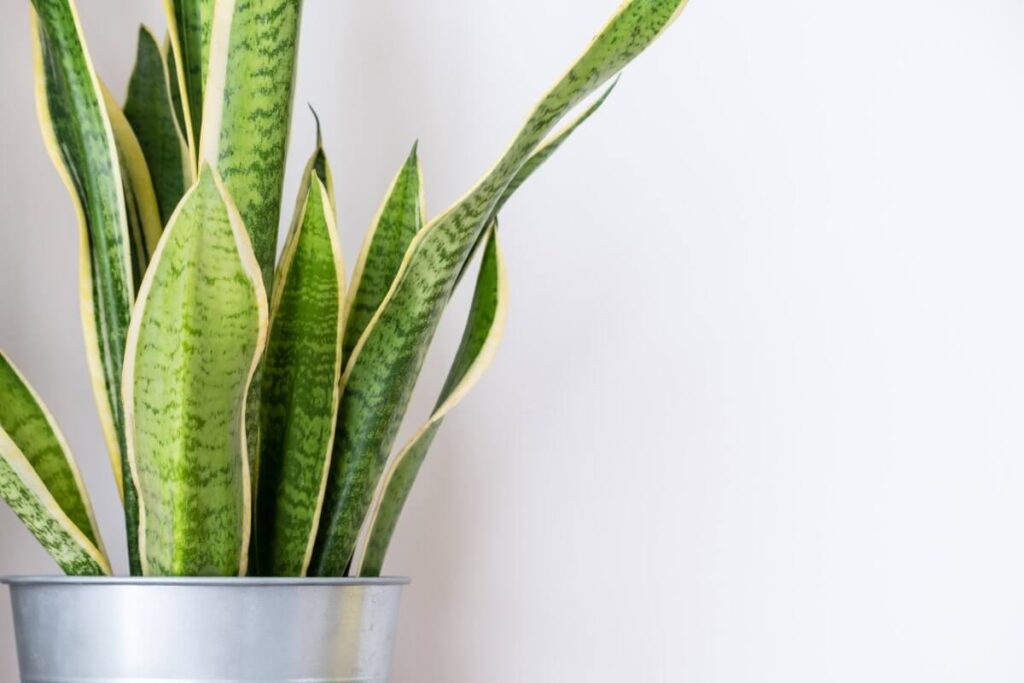
Snake plants will always need well-draining soil no matter what container you use. But if you use a plastic container, be extra careful that the soil mixture does not retain water.
Snake plants do best in terracotta pots with drainage holes, as this material minimizes moisture retention. Terracotta pots are also strong enough to contain snake growth. Its root system and rhizomes can warp or crack other containers.
The best soil for transplanting snake plants
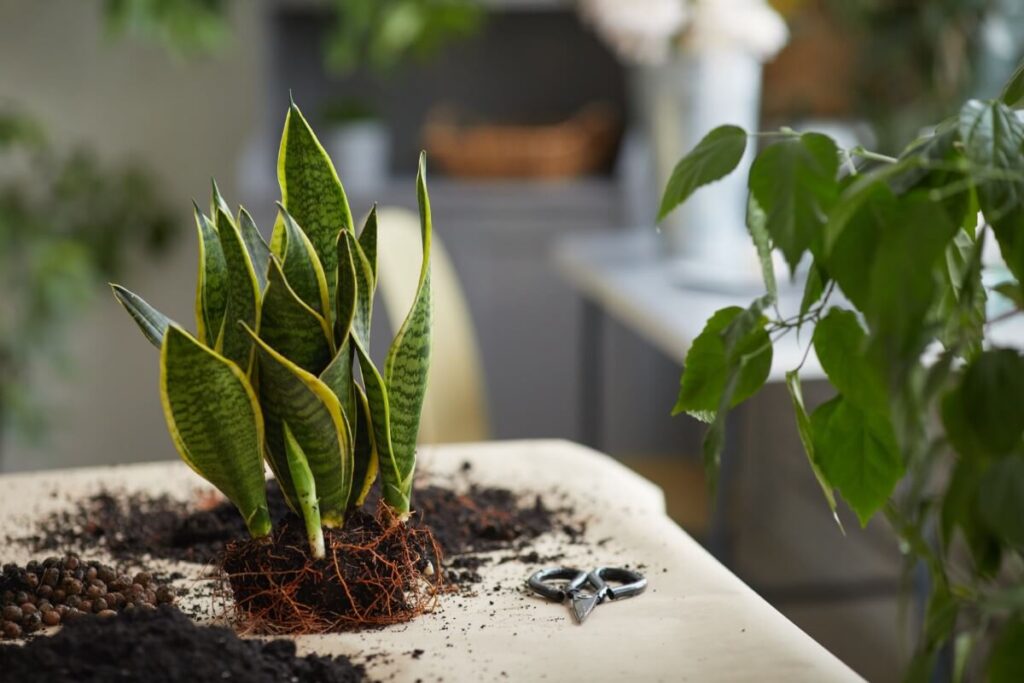
As your snake plants grow larger, you will want to replant them to give them the extra space they need. However, this will not affect the type of soil you are going to use.
When replanting, give your snake plant fresh soil in the same mixture if it worked well for the plant. If you are looking for a new mix to try, find our ultimate recipe for snake plant soil below.
Are soil mixtures of cactus or orchid good for snake plants?
Yes, a cactus soil is an excellent choice for snake plants. Orchid bark can also work well to improve drainage in the soil of this plant.
The ultimate recipe for snake plant pot mix
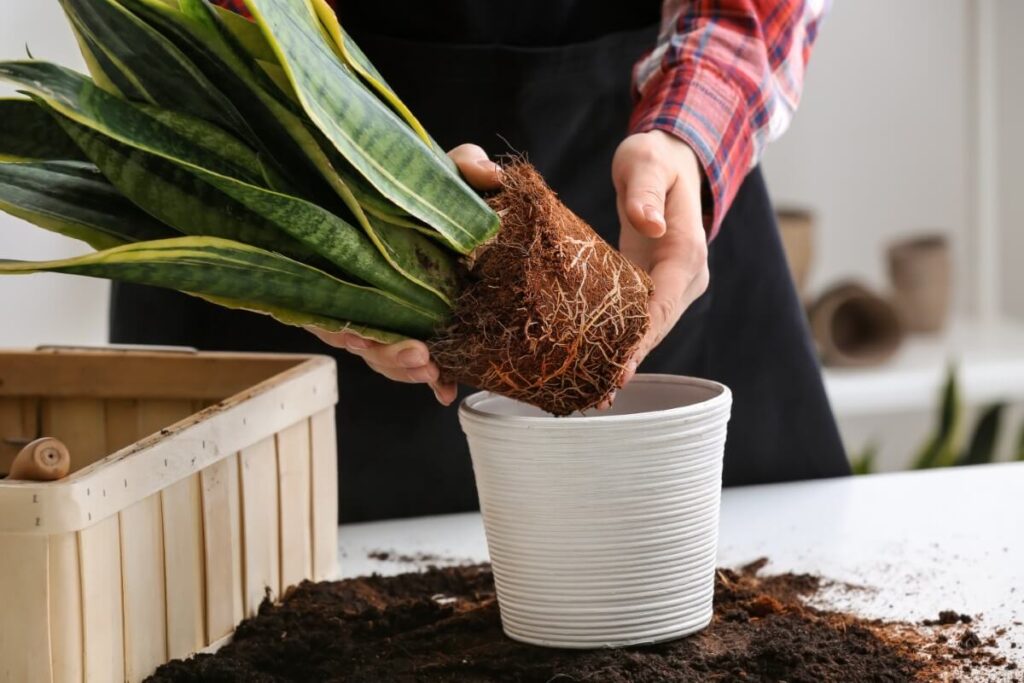
First, it is important to remember that there are lots of ingredients you can use to achieve a good soil mix for snake plants. In addition, the plant’s needs may vary slightly depending on its location and other environmental factors.
Components in a snake plant pot mixture
Planting soil – the soil is the basic framework for your plant medium. Ideally, you want something light, airy in texture and consisting of organic and aged natural material.
Sphagnum peat moss has fine particles but still a rough texture. This leads to large water-retaining and nutrient-containing capacity together with good aeration.
Coco coconut is made from coconut shells. It has a similar consistency as peat moss but is compacted a little more over time.
Pine bark fines are small pieces of conifers such as spruces, pines and spruces. This bark has a high proportion of lignin, which means that it retains its shape over time. Therefore, it is excellent for resisting packing and giving air pockets.
Perlite is a type of expanded rock. It looks and feels a lot like Styrofoam. It does not absorb water, so it is good for giving aeration and drainage to a soil mixture.
Now that you understand a little about what each component gives to a pot mix, here is a good recipe to follow. It offers good aeration and drainage, but also holds enough water for your plant to absorb everything it needs.
This mixture consists of:
- Perlite or coarse sand (1 part)
- Pine bark pine (1 part)
- Coco Coir (1 part)
- Potting soil containing spagnum peat moss (3 parts)
To make the mixture, add all the ingredients in a large container and then add water until just moist. Mix the ingredients thoroughly and add a layer to the base of your pot so that the root ball of the plant can sit just below the lip of the planter.
Then place the root ball in the pot and add soil to fill the gaps around it. Avoid packing this soil mixture too hard, as the goal is to create a loose and freely draining soil environment for your snake plant.
Recommended premixed soils for snake plants
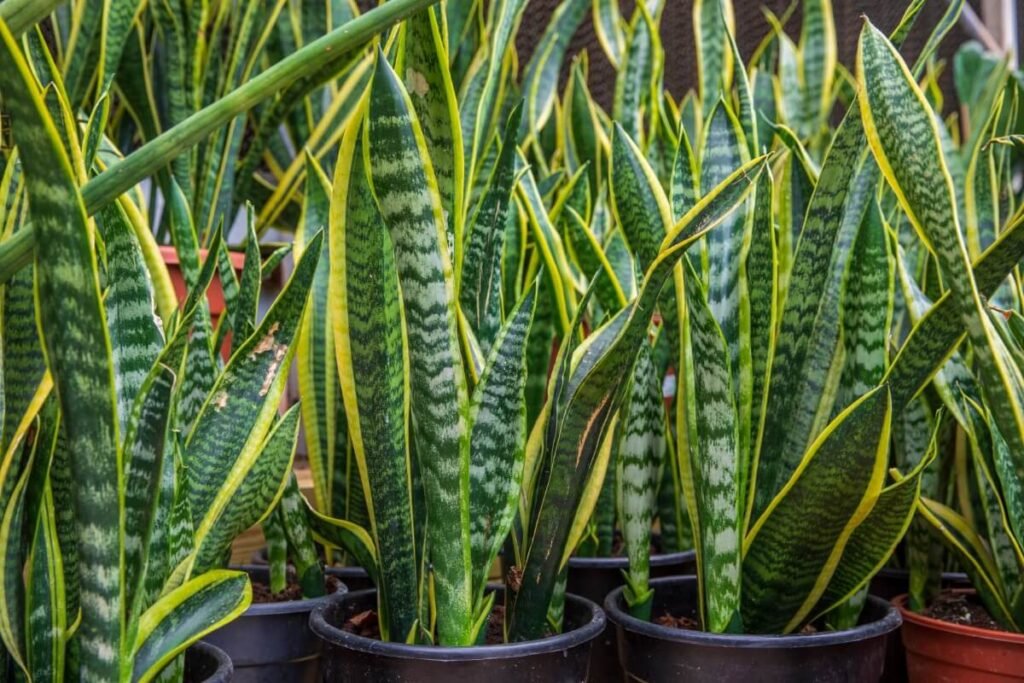
Now you may want to buy a ready-made potting soil that you can use for snake plants. If so, here are some options you can buy online to meet your snake plant’s care needs.
Cactus soil will work well for this plant, but you may want to consider supplements as a small amount of compost. This can help increase the nutrition that your snake plant receives.
Ends
Dracaena trifasciata is a hardy potted plant that gives a sculptural quality to all spaces. Creating the best soil mixture for snake plants will nurture your plant and help it grow happily in your home. With the right foundation in place, this species will be one of the simplest houseplants in your collection.
If you want to expand your collection, see our important guide to the best plant stores and nurseries that supply snake plants across the country.
Snake Plant Soil Tips FAQ
Which pH value in the soil is best for snake plants?
Snake plants do best in soil with a slightly acidic pH. Remember that a neutral pH is 7.0, and all numbers below this are considered acidic. Snake plants do best in a mixture with a pH between 5.5-7.5.
Can you use cactus soil for snake plants?
Cacti or succulent soil mixtures tend to have similar beneficial properties (such as light acidity and good drainage) which is suitable for snake plants.
What are the most important soil considerations when replanting a snake plant?
Always replace your soil when replanting your snake seedlings to remove any problems with compaction and diseases.
How to mix Snake Plant soil?
To get the snake’s plant soil to mix, add all the ingredients in a large container and then add water until it is just moist. Mix the ingredients thoroughly and then fill your snake pots.
Do snake plants like moist soil?
Snake plants do best in a potted plant mixture that retains moisture but also drains well. Make sure your pot has a drainage system so that excess water can spread during the watering cycles.
 pyomn
pyomn



